Somaliland is a very unique and peculiar place. For one, it is not even a recognized country. So when talking about it it pays to really understand some facts about Somaliland that make it such a fascinating place.
Let’s look at some Somaliland facts below and find out more about traveling and discovering this destination.
1. Somaliland was an internationally-recognized country for 5 days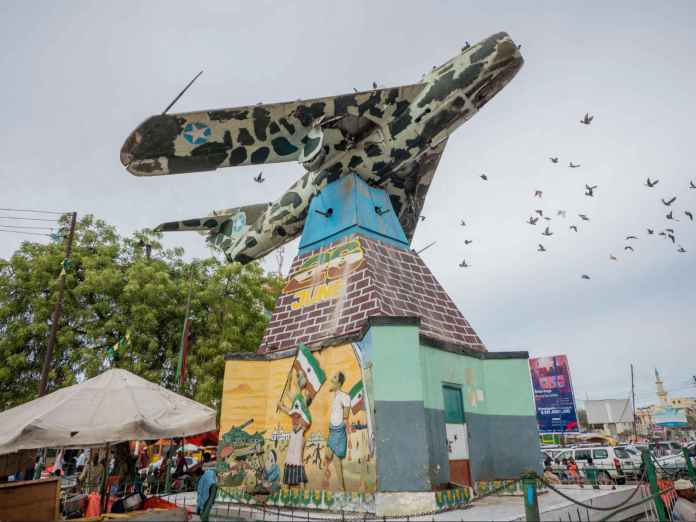 Monument to independence in Hargeisa
Monument to independence in Hargeisa
Despite the local government’s declaration of independence in 1991, Somaliland is not an internationally recognized country. It is a self-declared republic that has been seeking recognition since.
What makes this most interesting is that, for a brief period of five days in 1960, when Somaliland became independent from the UK, the country existed as an independent state. However, it then agreed to join the rest of Somalia who had been under Italian rule until then to form a greater Somalia.
Constitutional promises made by the south were never fulfilled and the central government of Somalia proceeded to crush and oppress the Somaliland clans and population, taking unfavorable decisions that benefited Mogadishu. Eventually, when Barre’s regime collapsed in 1991, Somaliland took the opportunity to grab independence again.
Despite the complete lack of international aid, World Bank support and budgets to manage a new country, Somaliland has managed to nurture its own government, parliament, Constitution, elections, rule of law and army. The last elections took place in November 2017 and were considered democratic and peaceful.
Because the country is not recognized, neither is its passport. The Somaliland passport looks the part and has everything to be an official passport but you can’t have a passport from a country that does not exist.
Somaliland flag
 Somalilanders are officially Somali citizens and so need to obtain a passport from the central government to travel internationally, although Djibouti and Ethiopia are said to let Somalilanders travel with their passport together with Belgium, the UK, France, Kenya, South Africa, South Sudan and, since early 2018, the UAE.
Somalilanders are officially Somali citizens and so need to obtain a passport from the central government to travel internationally, although Djibouti and Ethiopia are said to let Somalilanders travel with their passport together with Belgium, the UK, France, Kenya, South Africa, South Sudan and, since early 2018, the UAE.
2. Unrecognized but safe
Despite lacking official recognition by any country, Somaliland is one of the most stable and democratic parts of the war-ridden Horn of Africa. I wrote a post about Safety in Somaliland specifically to address the topic. Our Somaliland SPU police escort chatting to a khat seller in Hargeisa
Our Somaliland SPU police escort chatting to a khat seller in Hargeisa
As opposed to unstable and terrorist fueled Somalia, Somaliland has not seen any terrorist attack since 2008 and crime is low. Tourists are required to be escorted by the Special Police Unit (SPU) in Hargeisa for any travels outside of the city and should be accompanied at all times. I did not feel like the police escort was going to risk his life for us but it did help in crowded places when we were getting too much attention or aggressive looks from the locals.
Although the low crime and lack of terrorist attacks may appease some people’s fears, you may still not feel fully safe as the situation could change anytime if Al Shabaab decided to attack the north or the war in the rest of Somalia expanded. Safety in Somaliland seems to be pretty guaranteed at the moment.
This relative safety makes Somaliland the prime destination for those seeking to visit all the countries in the world, but is still not enough of a reassurance for the majority of the population to embark on a trip to this unrecognized state. Somaliland, together with the rest of Somalia, is at the top of the list of the least visited countries in the world.
3. Pay electronically or be a millionaire
I spent a long time working in Africa with telecom companies so I know that mobile payments are pervasive and help bridge the gap between urban and rural areas. In Somaliland, mobile payments are so important that they are estimated to account for half of the transactions and they are made in US Dollars.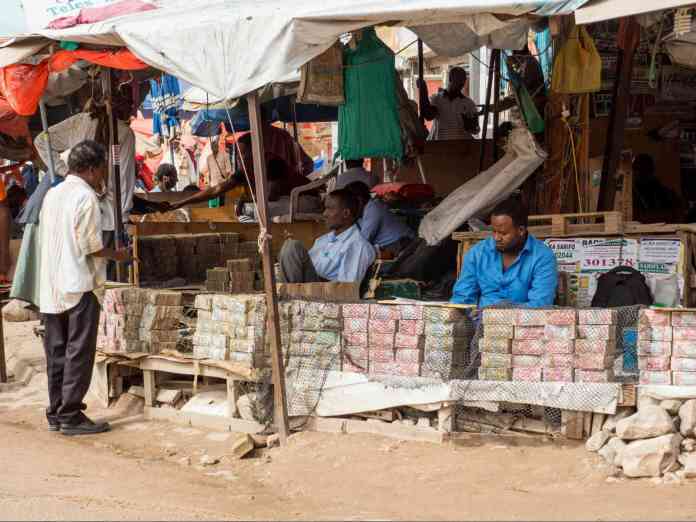 Money changers in Hargeisa
Money changers in Hargeisa
While this may sound strange, there are a few reasons why this makes a lot of sense. Firstly, the Somali currency, the Shilling, is constantly devalued and suffers from inflation. So it is less and less valuable every day.
Secondly, the amount of counterfeit Shilling is so high that the World Bank estimates 98% of the currency is fake.
Thirdly, the exchange rate of the Shilling is about 8,000 per US Dollar so you only need to exchange 100 US Dollar to become an instant millionaire. Counting money in Hargeisa
Counting money in Hargeisa
And lastly, the most common currency denomination is the 1,000 Shilling so you need to carry a bucket load of notes every time you need to pay for something more than a coffee. Seeing wheelbarrows full of stacks of cash around the Hargeisa market is not unusual.
All of the above creates the perfect ground for an electronic, US Dollar based mobile payment system to thrive. And thrive it has. Around the country you can see small khat sellers and street vendors receiving small payments with the local mobile payment systems, Zaad or eDahab.
What do they do with all that electronic cash in US Dollars? They go to the money market and exchange it for Shilling, if they need local currency.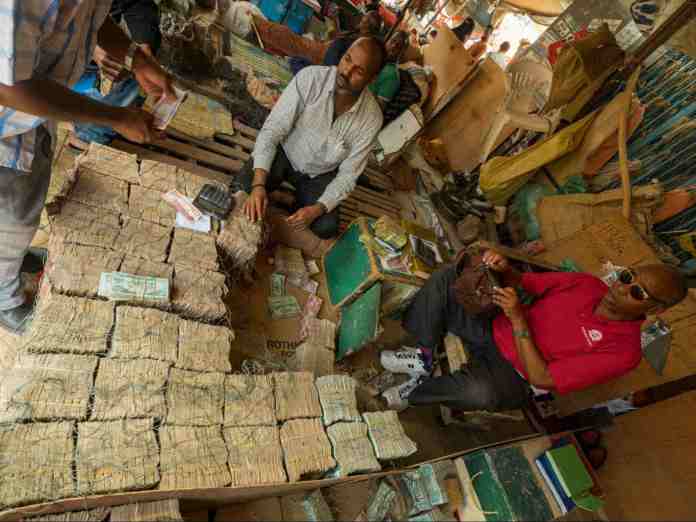 Piles of money on the floor in Hargeisa Somaliland
Piles of money on the floor in Hargeisa Somaliland
The money changers display their goods on the floor, like any other seller, only in their case, we are talking about money, stacks of it amounting to $20,000 in the local currency. And just exchange whatever you need it for. How do they get it out? They then go to the telco companies who offer the service and cash out the US Dollars.
4. It’s the desert but when it rains, it floods
I was very confused when it started to pour like crazy and the ground became absolutely drenched and flooded. I thought Somaliland would be similar to Djibouti: desertic and dry. But Somaliland is a bit greener and it does get a lot of rain, even if the soil is not particularly fertile.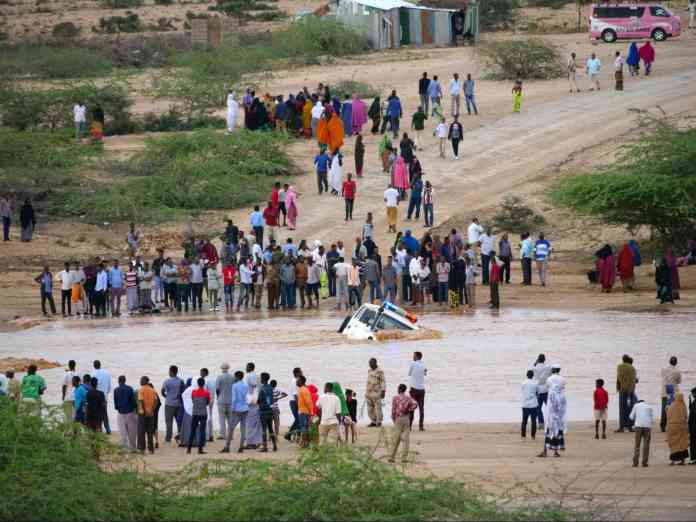 Flooded wadi cuts the road Hargeisa-Berbera. An ambulance get stuck in the gushing water
Flooded wadi cuts the road Hargeisa-Berbera. An ambulance get stuck in the gushing water
And since it is so dry and the earth becomes cracked under the blaring sun, the rain soon becomes a flash flood turning otherwise empty wadis into gushing rivers in no time. While this is fascinating to see, it is also very dangerous and it does cut main roads like the one from Hargeisa to Berbera which crosses a wadi at around half way. A wadi is a valley, ravine, or channel that is dry except in the rainy season.
We were stuck there for four hours while waiting for the water level to come down. The locals seemed to be enjoying the entertainment it provided and some of the cars are ready for such unexpected flooding, but others were not so lucky. An ambulance which, I suspect was trying to attend to an emergency, had to be rescued by a lorry when the waters tipped it over.
5. Drive on the right, steering wheel on the right
Cars in Somaliland drive on the right hand side of the road but have the steering wheel on the right. This makes for the very weird situations of the passenger seat being next to the oncoming traffic.
This would probably mean that the cars used are imported from left hand driving countries, of which there aren’t many, but some of which are neighbors of Somaliland. The below is an image of the left and right hand driving countries in the world. You can see how a lot of former British colonies in East Africa are still driving on the left.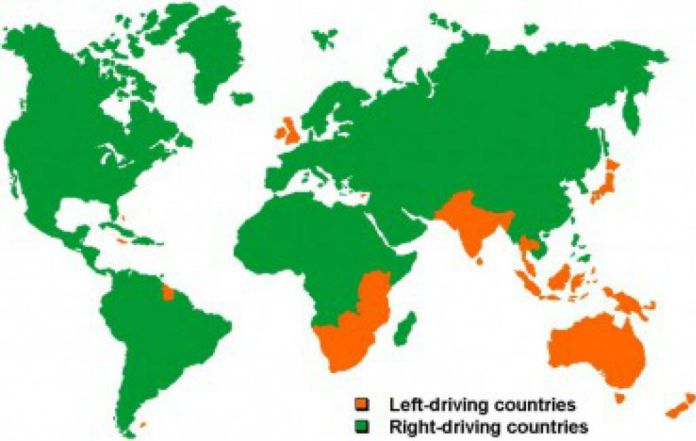 Source
Source
6. Graphic signs on stores Storefront in Hargeisa
Storefront in Hargeisa
The storefronts in Somaliland are incredibly colorful and filled with pictures of what is on sale inside. At first I thought it was just a nice way to paint the facade of the stores, as opposed to the usual, ever-pervasive one color paint used across Africa and sponsored by the telecom operators and other large FMCG companies.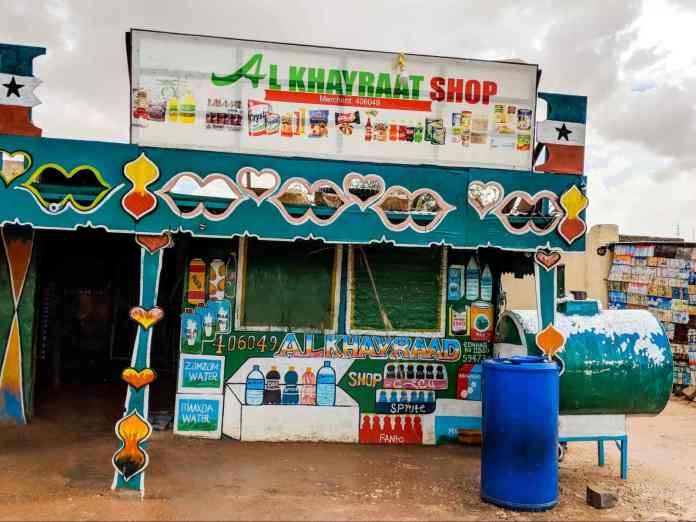 Another Storefront in Hargeisa
Another Storefront in Hargeisa
But then I realized that it was just a graphical representation of what was being sold in-store. I inquired about this practice to see if there was a reason and realized that one of the most interesting facts about Somaliland is the practice of painting stores with their merchandise. This is not just for fun but also because a lot of people cannot read so the pictures aid in deciding whether the specific store has what the buyer is looking for.
7. Spaghetti with your camel, curry with your pancakes
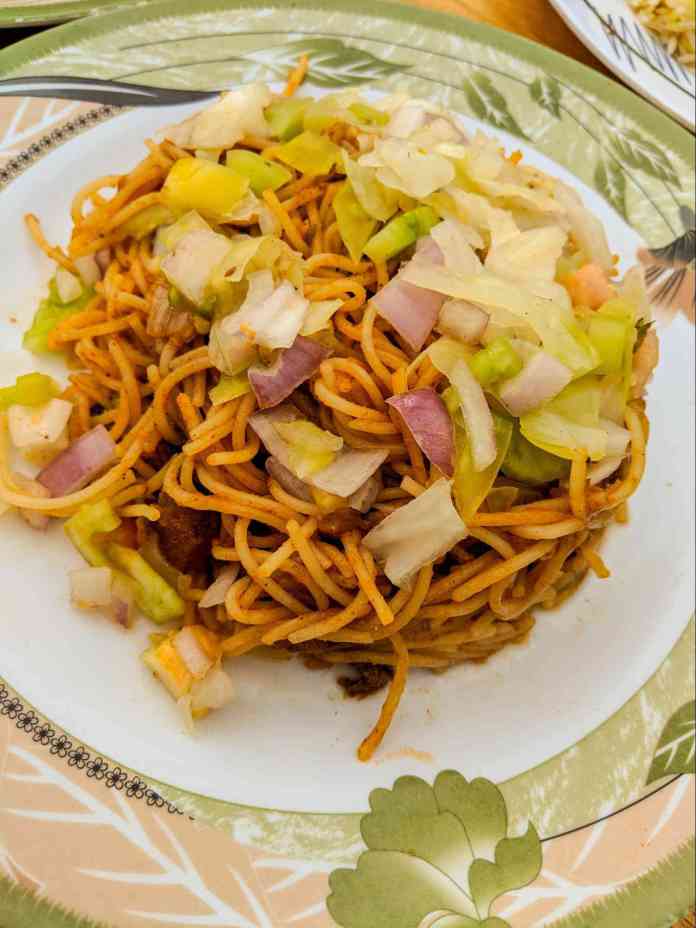 Your diet in Somaliland will be pretty limited and mostly confined to some goat and camel meat. Although a lot of people will tell you camel meat is pretty healthy, it is very greasy, fatty and chewy and not pleasant to eat. At least not to me.
Your diet in Somaliland will be pretty limited and mostly confined to some goat and camel meat. Although a lot of people will tell you camel meat is pretty healthy, it is very greasy, fatty and chewy and not pleasant to eat. At least not to me.
But Somalia as a whole has half of the world’s camel population. Add this abundance to the infertility of the soil and the extreme weather and poverty of the country and it should come as no surprise that not a lot of alternatives are on offer. You will eat a lot of camel meat.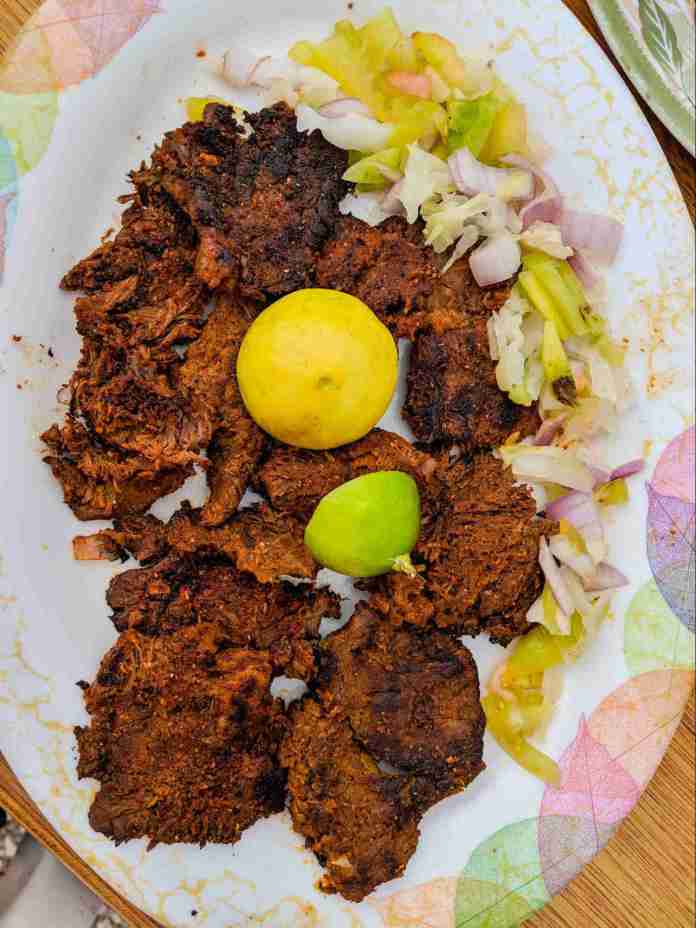 Camel meat
Camel meat
Somalilanders also like to eat camel liver and that is a popular breakfast item accompanying some laxoox, a pancake type of bread that resembles a bit the Ethiopian injera but is thankfully sweeter and more pleasant. Camel liver stew can also be found in the market in Hargeisa, if you are feeling brave enough.
For a bit of change, you might be able to find some goat meat. Goat meat is common across the Middle East and I had my fair share in Oman. At the Six Senses Zighy Bay I enjoyed it in the traditional way of cooking: buried underground with hot stones and left to cook slowly for many hours. Goat meat is not very different from the taste of lamb and it is a good variation from the camel meat.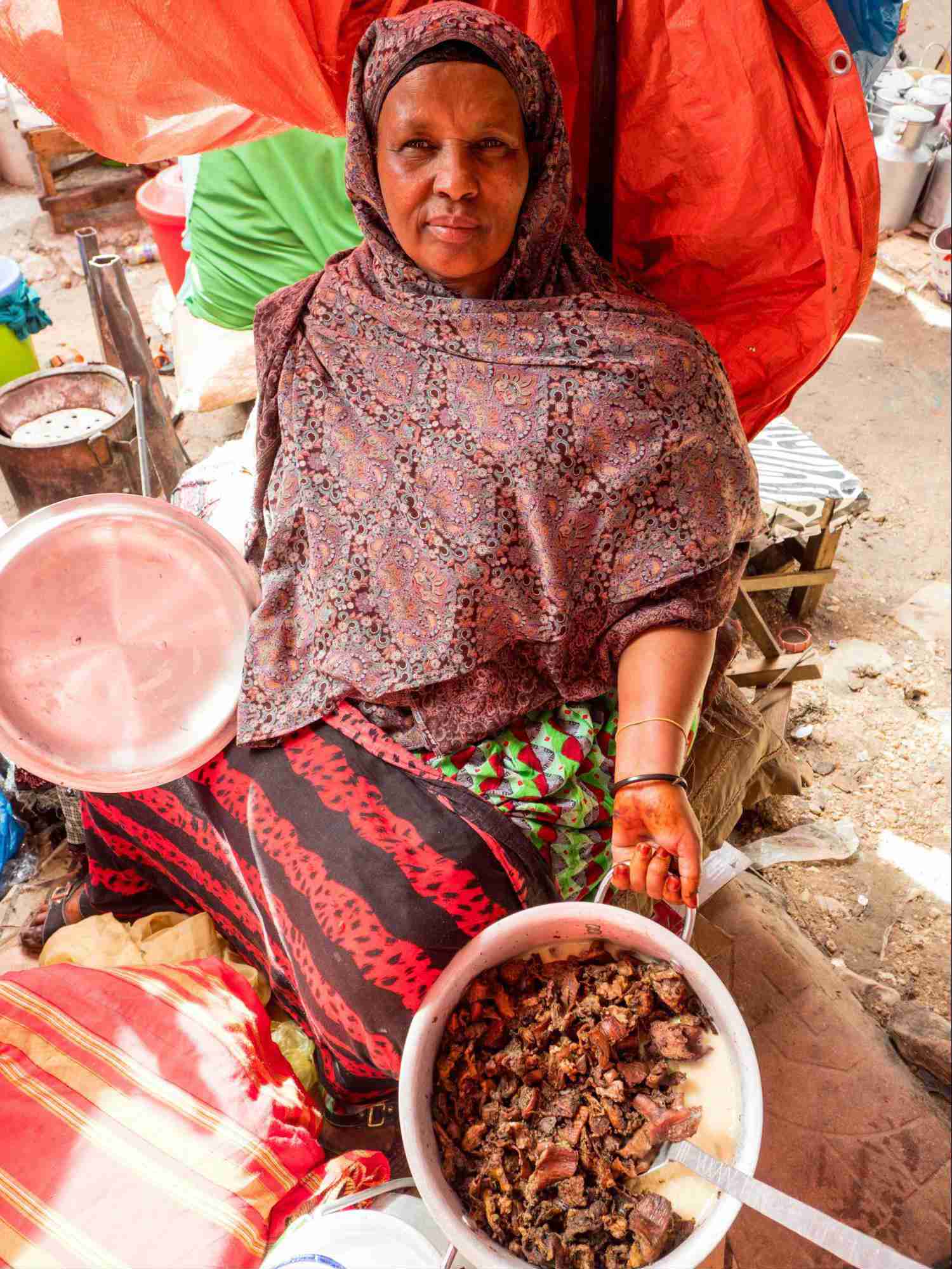 Somalilander market seller with her camel liver
Somalilander market seller with her camel liver
Perhaps the most curious things about Somaliland is that fact that they eat spaghetti as the main staple and carbohydrate. All African countries have one type of staple or other, sometimes it is cassava, ugali, potatoes, banana, tapioca or even just plain rice. But I had never seen spagheti as being such a commonplace item.
The time of Italian colonialism in the south of Somalia brought pasta to the country and I felt grateful for whoever added a bit of variation to the rice. If everything else fails, you can always eat plain pasta. Bear in mind you might have to learn to eat it with your hands as locals do.
And if you are in Somalia, you can also always have a banana, with your spaghetti or rice. While bananas may not be as common in Somaliland, they are certainly as staple of the rest of Somalia.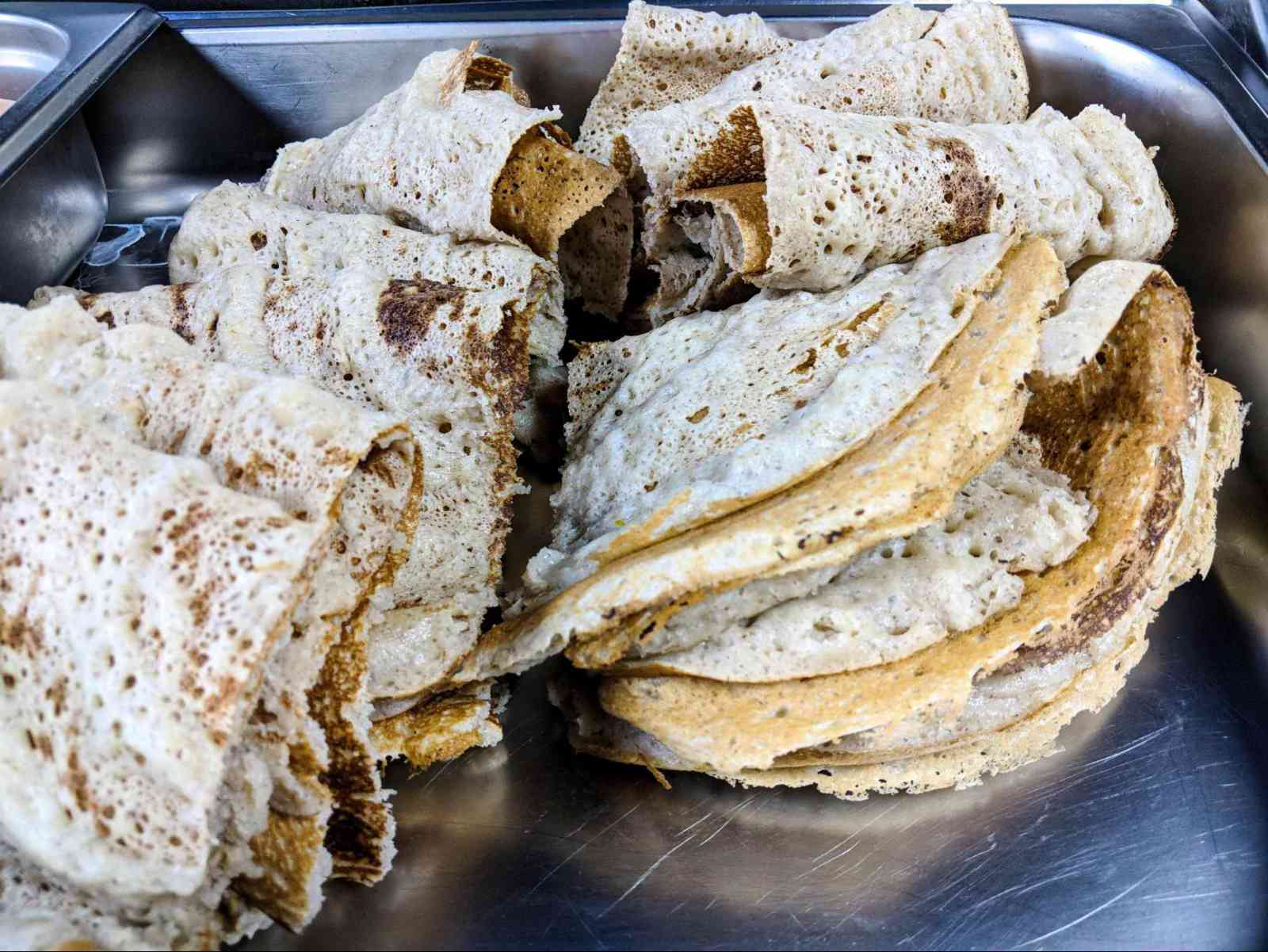 Laxoox
Laxoox
Somaliland’s cuisine is pretty limited and aside from camel, goat, rice and spaghetti you are unlikely to eat anything else. Except for breakfast where a local variation of a pancake called laxoox which is a spongy, holed up pancake of a slightly darker color than the French crepe and usually eaten with chickpea curry for breakfast.
8. Don’t wear trousers
If you are a woman and are visiting Somaliland, you will have to cover your head. I thought this was all I needed to do so I dutifully put my tube scarf on every time I left the hotel, but I was wrong.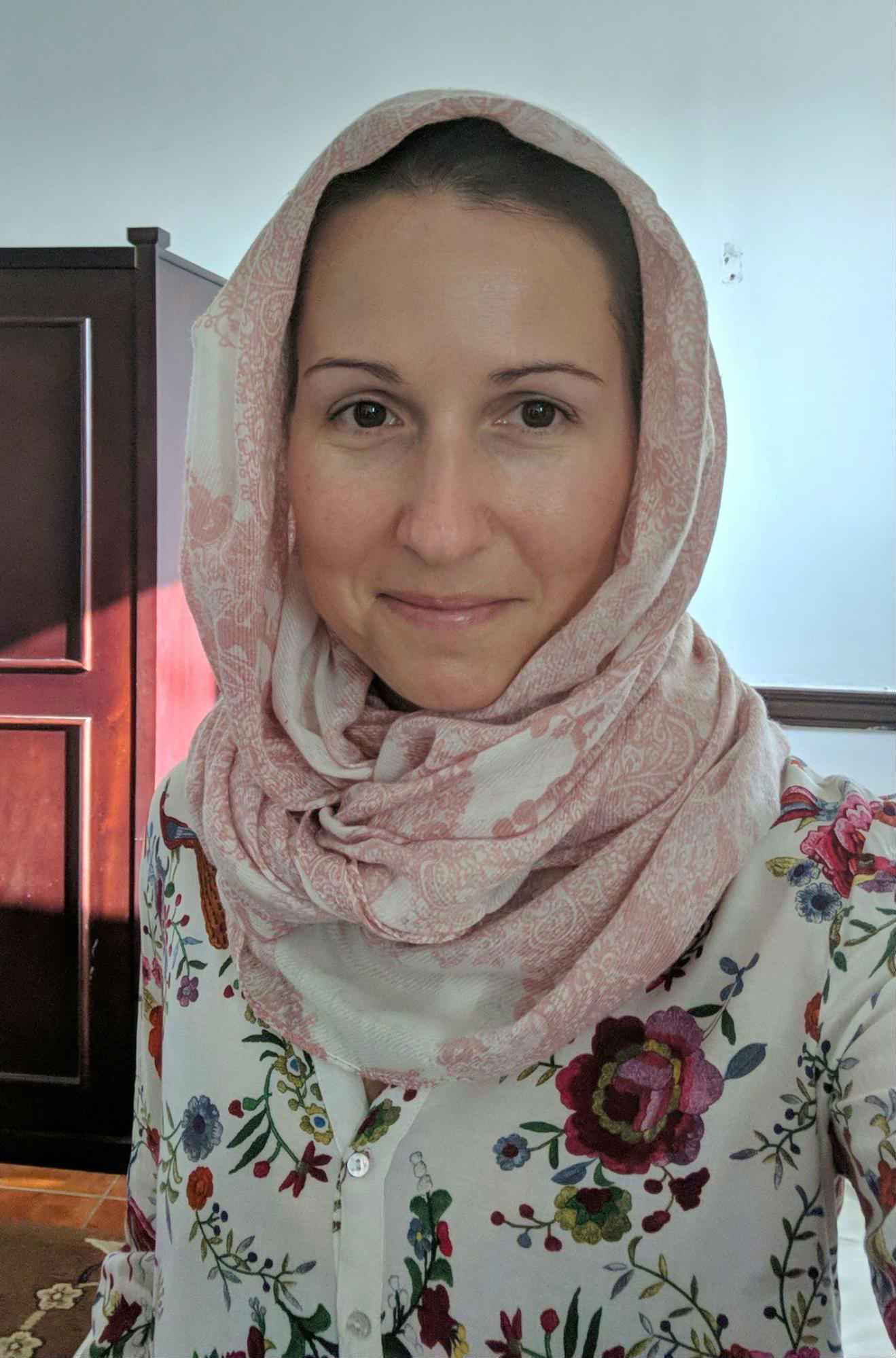 My outfit in Somaliland
My outfit in Somaliland
I was dressed in tunics and leggings or baggy pants underneath, an outfit that I have worn everywhere in the Islamic world and have never had an issue with. This would even be an acceptable outfit in conservative Saudi Arabia now that they have lifted the requirement to wear a full length abaya and headscarf, or in Iran. Somaliland was going to be the first place where this was not enough.
I got told off by locals pretty much every day. Sometimes, in an aggressive manner, sometimes in a more conciliating way, trying to explain that I would feel more comfortable in a wrap-around sack-type of dress, but it was clear that wearing trousers was not acceptable and made the locals question whether I was a woman or a man.
To sort this out, I headed to the Central Market in Hargeisa and got a bhati dress made, the local version of a kaftan, to appease the locals and blend in. Bhati have been praised by international Somali models and made an appearance in Vogue, but I doubt it helped me camouflage. The colorful flowy nature and the huge size turned me into a massive walking sack.
Check this video of the whole dress-making experience in Hargeisa Central Market. The end-to-end dress making process took no more than 20min. And guess what, men are the ones sewing the clothes in Somaliland. Western husbands, take note.
9. Entrepreneurial and proud locals
Somaliland’s annual budget was around $300 Million in 2016. This is a very low amount for a country of 3,5 Million population. However, most of the economic development and business is fueled by the many Somalilanders returning to the country every year and the remittances sent from abroad.
It is estimated that the amount of remittances sent by the Somalilanders living abroad could be almost 2.5 times the annual budget of the government. These remittances are sent by the diaspora living in Europe and North America and are often sent in the form of small amounts via remittance companies. This would mean that remittances contribute over half of Somaliland’s GDP as per the UN Office for the High Representative of the Least Developed Countries.
10. Fast internet and free WiFI
I spent a long time planning for my trip to Somaliland and making sure I had all the email auto-responders and measures in place for not being reachable for five days. However, this was not necessary as I found myself perfectly connected in Somaliland.
The availability of internet services was perhaps one of the most interesting and unexpected facts about Somaliland and one which I certainly did not expect.
The internet connectivity is essential to the money transfer ecosystem as you can’t pay or receive money if you don’t have signal, but even to someone who was a telecoms consultant in emerging markets for eight years like me, the connectivity in Somaliland was quite impressive. It was not the fastest, but it certainly was pervasive.
However, note that internet for visitors does not come cheap and we bought 4GB for $50 at the airport. The Damal Hotel I stayed at both in Hargeisa and Berbera both had free internet for guests and the airport had free WiFi.
By Mar
Please visit Mar’s beautiful website: Once In A Lifetime Journey
———————————————————————-
About the Author
HI, I’M MAR
 Welcome to Once in a Lifetime Journey, a luxury and out of the ordinary travel blog focused on the most exclusive hotels and resorts, the unforgettable experiences, the best destinations and the least visited countries in the world.
Welcome to Once in a Lifetime Journey, a luxury and out of the ordinary travel blog focused on the most exclusive hotels and resorts, the unforgettable experiences, the best destinations and the least visited countries in the world.
In the last 13 years I have been fortunate enough to visit over 100 countries and spend around half of the year traveling thanks to an international job as a strategy consultant and at Google.
In 2018 I left my 15 year corporate career to do what I am most passionate about: traveling, growing this and my other blog, Singapore n Beyond, and developing my Digital and Influencer Marketing consultancy where I help brands work with influencers like me.
Twitter @MarPagesTWL Instagram @ onceinalifetimejourneys




























